I'm looking for the correct way to apply an offset to a set of Euler rotations. I would like to have a transformation where given a specific set of Euler angles (x1,y1,z1), if I transform them I would get an Euler sequence of (0,0,0). All other Euler sequences (xi,yi,zi) transformed would then act like (x1,y1,z1) were (0,0,0).
Background:
I'm using Oculus DK2 HMD to display a virtual environment (Vizard 5, Python 2.7.5) while using a Vicon motion capture system (Nexus 2) to update the position and orientation. I can get the Euler angles of the HMD (from a marker cluster, not the DK2 gyroscope) from the Vicon system, but when facing my desired (0,0,0) orientation the HMD has a non-zero rotation sequence.
Problem:
I'm having a hard time thinking about what transformation (rotation matrix?) I could find that could take a sequence like (-105, 110, -30) and make it (0,0,0) without being a useless matrix of zeros. If the rotation matrix was all zeros, any sequence would be transformed to (0,0,0)). The formula I have in mind is (please ignore syntax):
[0,0,0] = (3x3)R*(3x1)[-105,110,-30] what is R? R cannot be 3x3 zero matrix.
Attempt:
I stupidly tried to simply subtract the offest euler angles like so:
import viz
viz.go()
navigationNode = viz.addGroup() #create node
viewLink = viz.link(navigationNode, viz.MainView) #link it to the main view
#I am not showing how I get variables HMDX HMDY HMDZ but it's not important for this question
navigationNode.setEuler(HMDRZ-90,HMDRX+180,-1*(HMDRY)+30) #update the view orientation
Alas,
I'm sure this is possible, in fact I've done similar things in the past where I had to transform marker clusters into a rigid body's frame at a calibration position. But I just can't get around the trivial solution in this case (zeros matrix). If by chance anyone would explain this using quaternions, I can also use those.

